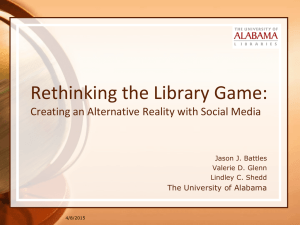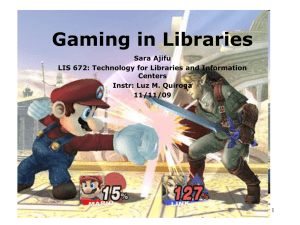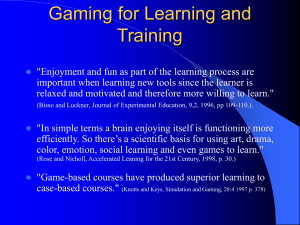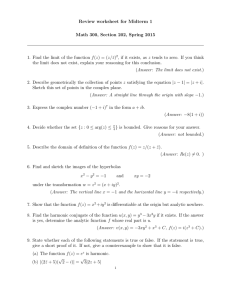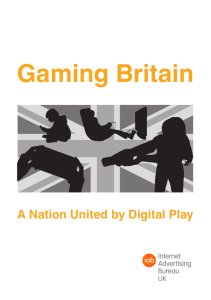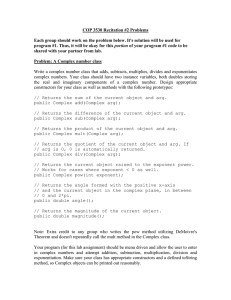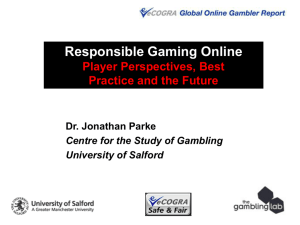GameMakingBattles
advertisement
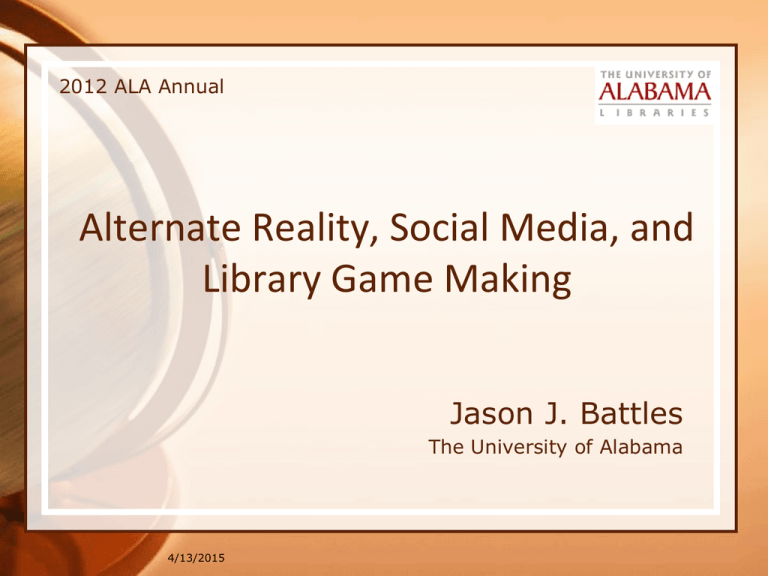
2012 ALA Annual Alternate Reality, Social Media, and Library Game Making Jason J. Battles The University of Alabama 4/13/2015 Libraries and Gaming • Why create a library game? • NMC Horizon Report 2012 • Game-Based Learning • Time to adoption: 2-3 years • Promote information literacy • Accessing and searching resources • Highlight library resources • Special collections, electronic journals, etc. 4/13/2015 What Will Engage Your Users? 4/13/2015 4/13/2015 4/13/2015 Finding the Right Format • Libraries cannot directly compete with commercial games • Determine your available resources • Incorporate social media sites to engage students where they are • Develop manageable game objectives 4/13/2015 Alternate Reality Games (ARG) • http://www.argn.com • This is Not a Game by Dave Szulborski Components • • • • • Web-based and story-driven design Disguises the fact that it is a game at all No defined rules Runs over a fixed period of time Player reveals the plot and goals through interacting with game components 4/13/2015 Why an ARG? • Non-traditional approach that is more engaging for players • Does not require large budgets or a team of programmers • Social media sites are natural locations for game components • ARGs have been successful in marketing movies, television shows, and video games • Why not libraries? 4/13/2015 Our Game - Project Velius 4/13/2015 Considerations in Building our ARG • Development directed by diverse team of library personnel with limited resources • No additional funding • No team of programmers • Game must be completely online • Game should be accurate representation of how library resources are accessed and used 4/13/2015 Project Velius Storyline • Developed over several months by three committee members • Main character and her boyfriend work at a biotech company • He goes missing • She uses clues found in library resources and social media venues to find him 4/13/2015 Our Game Components • Library Resources • Unique historical collection • Electronic journal article • Online course reserves • Social Media Components • Facebook group • Served as hub of game • Facilitated player interaction • Twitter, YouTube, and WordPress 4/13/2015 4/13/2015 Web Sites 4/13/2015 4/13/2015 4/13/2015 Running the Game • Blogs and Twitter were the main tools used for character interaction • Members of the development group took on the roles of the characters making blog posts and tweets timed by a detailed script. • They also built the story’s alternate reality through backdated blog entries • One person served as a game master to help players via the Facebook group 4/13/2015 4/13/2015 Marketing • • • • No carrot Flyers, news ad, web ad Bibliographic Instruction sessions Freshman courses Assessment • Web Stats • Surveys • End game event 4/13/2015 Lessons Learned • Start with a strong hook! • Resist gating progress • Build something you can easily replicate • Find collaborations in development and marketing • Think about assessment at the start 4/13/2015 Next Steps • Follow advancements in technology, gaming, and instruction • Mobile and social gaming • HTML5 • Horizon Report • Continue to examine what motivates players in games • Find ways to include users in the creation and development process 4/13/2015 Contact Information Jason J. Battles jjbattles@ua.edu 4/13/2015
